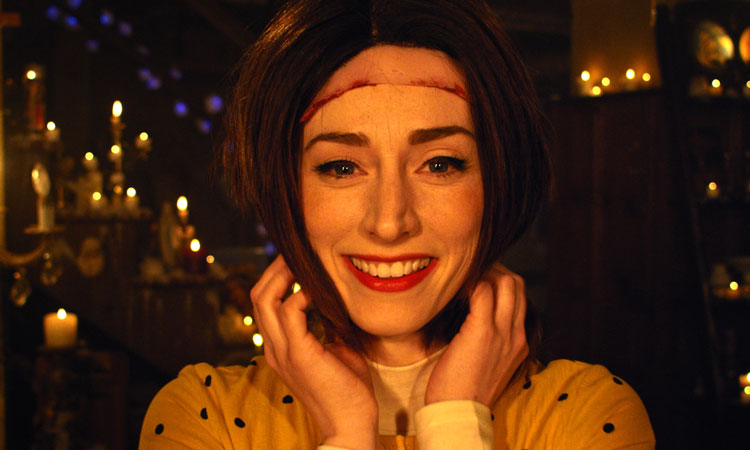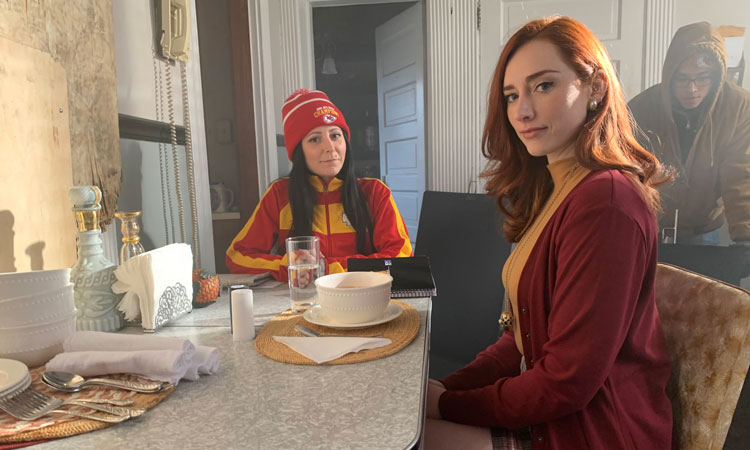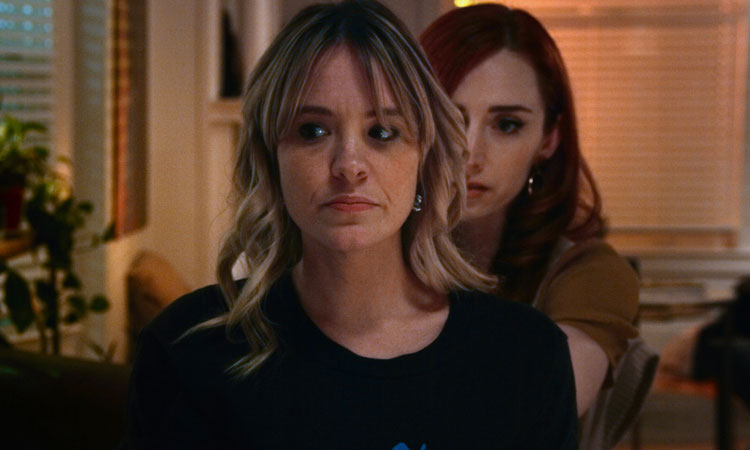In The Stylist, Claire’s job as a hairstylist means she can move through other people’s worlds… but when the right target sits in her chair, she does more than observe their life – she ends it, and keeps a permanent souvenir. However, her lonely life, meticulous method and secrets are suddenly thrown into turmoil when her regular client, Olivia, asks her to style her hair for her wedding…
The Stylist is a wickedly intelligent look at the world through the eyes of a serial killer with a penchant for hair and murder. We spoke to the writer and director of the movie, Jill Gevargizian, about why Leatherface was her inspiration for Claire and her dream of ending a horror film in a church…

How did you first get the idea for The Stylist?
I’ve been a professional hairstylist for 17 years! So I basically combined two of my biggest passions: hair and horror. One day the question dawned on me: How does a hairstylist serial killer movie not already exist?
The Stylist was, at first, a short movie. Why turn it into a feature length film?
It was always my intention for this concept to be told in feature length form. But at the time, almost five years ago, I knew I needed more experience as a director before I tried to make that leap. So we made a short film first and it’s been a great tool to use to help pitch the concept for the feature, like potential investors. It’s basically a 12-minute long trailer!
The film includes a deep character study of a serial killer with Claire, what were your inspirations for this character?
Claire, The Stylist, started with a lot of inspiration from Leatherface. They both come from traumatic family backgrounds that have shaped them into who they are today. They both have extreme identity issues and their way of dealing with that is to wear their victim’s skin and attempt to envelop their personalities. I’ve always found Leatherface (in the original film) to be sympathetic. This way of life is all he’s known. From his perspective, he’s taking care of his family, protecting his home, and doing what he’s told. He never came across as blood-hungry to me. Admittedly Leatherface’s kills had more purpose, they also fed his family. Claire has to kill to get her fix, to be able to escape her despair and loneliness if only for a moment. But she battles with that side of her.
I read a lot about real serial killers and how they see themselves. They don’t see themselves as a psychopath. I’ve gathered they often believe they’re much more than that, that is just one small part of them. It’s a compulsion they battle with. I read an incredible book called Women Who Kill. It makes a case that a lot of female crime throughout time was done out of defense or oppression. Especially way back in the day, when a woman was either married off or homeless, because they had no rights. They had no other option but to turn to prostitution and then was arrested – ultimately just for being a woman. Like it was a trap, a dark destiny. That’s how we approached Claire’s journey in the film, her downward spiral. It was something that was going to happen no matter how hard she fought against it.

Claire and Olivia are two very different people! What were your thoughts and ideas behind this relationship?
The idea was that Olivia is the anti-Claire. I wanted to create this ‘double’/doppelgänger idea between Claire and Olivia. From Claire’s perspective, both characters come from a similar place, from a similar background, but Olivia‘s life turned out perfect and her’s turned out… not so perfect. Claire doesn’t understand why and begins to fixate on that.
Olivia is truly innocent in the whole thing, and opened up to the wrong person. Claire reads way too far into Olivia’s warm personality and thinks they’re much closer than they are. When she realises they are not becoming what she hoped – that disappointment mixed with thoughts like: ‘Why didn’t I get her life? What did I do wrong? Why does she deserve this but I don’t?’ Claire falls into a pit of bitterness and envy.
Why have the story set around a wedding?
It’s funny… It was a nightmare maybe… We had to plan a freaking wedding within a horror movie. Are we crazy? But honestly, back four years ago when we were working on the script, one day I just had this realisation like it’s going to end at a wedding and that’s going to give me the ability to have my dream ending. My dream ending was something very theatrical, extremely stylish, Gothic, and tragic. Much like one of my favourite films Baz Luhrmann’s Romeo + Juliet.
For me I was more attracted to the idea of ending the film in a church than it was about a wedding specially. The wedding idea just gave for a perfect storyline for the film. If one of her clients that she’s worked with forever, that she loves, begged her to do her wedding hair, it was a realistic way for Claire to get very close to that client. Closer than normal. And a way to end the film with a super dramatic bang, like I always dreamed.

What is it about horror that appeals to you?
Now, at my age (36) and as a filmmaker, I love that it’s a way to talk about serious subjects through an entertaining filter. But what attracted it to me as a child was that it made me truly feel something. It wasn’t passing entertainment. I loved to play scary games when I was a kid. I loved the thrill. But my first love was sad films. I remember as young as five years old being obsessed with any film that would make me cry. My love for horror is similar. And I like to blend the two.
What’s next for you?
Hoping to jump right back in and make another film. I’ve got a script I’m developing that’s more of a revenge-thriller. I’m also attached to direct a new horror script from Matt Black and Laurence Vannicelli (writers of Fangoria’s Porno). It’s also a dream of mine to break into series directing.
The Stylist was seen at FrightFest Digital Edition 2 2020. Arrow Films plans to release the feature theatrically in the UK in the first quarter of 2021.
